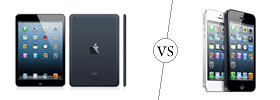Difference between Cable and Wire
Key difference: A wire is a single conductor while cable is a group of two or more conductors.

The term wires and cables are used pretty much used synonymously, but they are quite different in fact. One way to differentiate them is to remember that wires are a component in cables. Also, wires have a much wider scope of use. A wire is a single strand or a group of strands of an electrically conductive material, usually aluminum or copper. A cable, on the other hand, consists of two or more insulated conductors and can be either bare or covered. The easiest way to distinguish between the two is that the wire is usually visible, whereas a cable is most usually insulated.
There are two main types of wires: solid or stranded. A solid wire is usually a long length of single conductor. A stranded wire is many thin strands of wires twisted together. Solid wires offer low resistance and are perfect for use in higher frequencies, whereas a stranded wire has a longer life, due to its flexibility and can be used for a longer period than a single conductor. Wires are mainly used to carry electrical and telecommunications signals, but can also be used in various other forms, from bearing mechanical loads, to heating, to even in jewelry and clothing.
A cable is usually two or more wires running together or bonded, twisted or braided together. They are usually insulated rather than not, which gives them a better protection than just wires. Cables are mainly used to carry electrical and telecommunications signals.
 There are various types of cables, including twisted pair cable, coaxial cable, multi conductor cable and fiber optic cable. A twisted pair cable has two cables twisted around each other and is mainly used to carrying signals. A multi conductor cable is made up of many conductors insulated from each other, and is best suited for control. In a coaxial cable, the signal on the two conductors is not same. This is called an unbalanced line and performance on this cable is more stable than on a twisted pair cable. There are three types of fiber optic cables: plastic fiber – used for sending audio, multi-mode fiber – used for sending data, and single mode fiber – seen only under a microscope and has the best performance.
There are various types of cables, including twisted pair cable, coaxial cable, multi conductor cable and fiber optic cable. A twisted pair cable has two cables twisted around each other and is mainly used to carrying signals. A multi conductor cable is made up of many conductors insulated from each other, and is best suited for control. In a coaxial cable, the signal on the two conductors is not same. This is called an unbalanced line and performance on this cable is more stable than on a twisted pair cable. There are three types of fiber optic cables: plastic fiber – used for sending audio, multi-mode fiber – used for sending data, and single mode fiber – seen only under a microscope and has the best performance.
A detailed comparison between wire and cable:
|
|
Wire |
Cable |
|
Definition |
single conductor |
two or more conductors |
|
Uses |
To bear mechanical loads, to carry electricity and telecommunications signals, heating, jewelry, clothing, mesh, automotive or industrial manufactured parts, pins, needles, fish hooks, bulbs. |
Power transmission, to carry electricity and telecommunications signals. |
|
Types |
Solid wire, and stranded wires |
Twisted pair cable, coaxial cable, multi conductor cable and fiber optic cable. |
|
Advantages |
Solid wires are perfect for use in higher frequencies, offer low resistance. Stranded wire shows higher resistance to metal fatigue. |
Higher strength, heavy duty, insulated. |
Image Courtesy: kelseyjewelry.com, electroipartes.com









Comments
The difference between wire & cable has been suitably defined in view of their uses.
R.C.Gupta
Fri, 03/14/2014 - 03:03
Pages
Add new comment